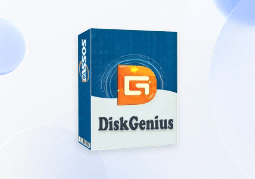Position: Resource - Backup & Restore - How to Clone One Hard Drive to Multiple Target Disks Simultaneously?
Notes:
If your purpose is to clone the system disk to another hard drive or SSD, and want the operating system on the target disk to be bootable, it's best to use the System Migration feature, which automatically optimizes boot settings to ensure the target disk is bootable.
All data and partitions on the target disk(s) will be erased during the disk cloning process! Pay special attention to this point, and be sure to back up any important data in advance to avoid irreversible data loss.
Before you start cloning a hard drive, there are several steps you need to take:
First, check the capacity of each target disk. Depending on the cloning method, the target disk capacity requirements are different. For example, if you use the "Copy all sectors" and "Copy all valid sectors only", the target disk's capacity must be equal to or larger than the source disk; if you choose the "Copy all files" method, the target disk's capacity only needs to be larger than the used space on the source disk. Therefore, please check the disk capacity in advance to avoid running into space issues mid-process.
Next, be sure to back up important data on the target disk(s)! This cannot be stressed enough: all data and partitions on the target disks will be wiped clean during cloning. If there's any important data, back it up first, use an external drive, cloud storage, or another backup method to ensure your files are safe.
Finally, you must prepare the hardware equipment, such as correctly connecting the source hard disk and target hard disks to your computer and ensure that the computer can recognize these hard disks normally. You can connect the drives via SATA ports directly, or use external enclosures, docking stations, or similar devices.

Step 1. Launch DiskGenius and go to "Tools" – "Clone Disk" to open the disk cloning interface.

Step 2. In the pop-up "Select Source Disk" dialog box, all disks detected by the software are displayed. Select the disk you want to clone from the list and click "OK".

Step 3. In the "Select Target Disk" window, select one target hard drive or SSD and click "OK".

If you need to clone to more than one disk at the same time, click the "Add Target Disk" button.

In the pop-up "Select Multiple Target Disks" dialog box, click "Add Disk" button.

Then you can select another target disk, and then click "OK".

Once all the desired target disks are added, click "OK".

Step 4. Back in the Clone Disk dialog box, select a cloning method based on our needs.

There are three methods to choose from, each with its own advantages, and you can flexibly choose according to the actual situation:
Tips for choosing the right method:
If you have extremely high requirements for data integrity, such as copying a system image, you can choose "Copy all sectors"; if you want to quickly migrate data and keep the file system structure consistent, "Copy all valid sectors only" is a good choice; if you want to optimize data storage and reduce file fragmentation, "Copy all files" is more appropriate.
If the target disk is smaller than the source disk, you can only choose "Copy all files" (DiskGenius compares disks by total sector count, which you can check on the main interface).
If you choose the "Copy all files" mode, you can also manually adjust the partition size on the target disk by dragging the partition borders; you can also click the "Manage Partitions" button to add or remove the partitions to be cloned and customize the partition layout of the target disk.
Step 5. Once you've selected your target disks and cloning method, click "Start".

A warning will appear, reminding you that all data on the target disks will be overwritten. Double-check that there's no important data left unbacked up, then click "OK" to proceed.

Step 6. Choose how to execute the disk cloning process:

"Hot Migration" or "Lock & Execute"? "Hot Migration" does not require restarting the computer. It performs the disk cloning by taking a snapshot while the operating system is running; "Lock & Execute" means that during the disk cloning process, the source partition will be temporarily locked, and other programs will temporarily be unable to access this partition. Therefore, you should close any software using files from the source partition to avoid errors or data loss.
Step 7. After you confirm, the cloning process begins. DiskGenius will display real-time progress, including total progress, data copied, data remaining, time elapsed, and estimated time left.

Once the progress bar hits 100%, the cloning is complete. Click Complete to close the wizard.

Plan your partition layout and space allocation of the target disk in advance, especially when using "Copy all files". Make full use of the manual partition resizing and the partition management feature to make the best use of available space.
Pay attention to your system performance. Cloning multiple disks simultaneously can put a load on your computer. If your system is underpowered, performance may drop. Close unnecessary applications to free up system resources and ensure a smoother cloning experience.
Check the cloning results. After the cloning is complete, open the target disks and verify that all data has been copied correctly. Make sure files open and function as expected to confirm a successful clone.
Whether you're upgrading drives, backing up data, or deploying systems, DiskGenius helps you do it faster and smarter. Try it today and simplify your workflow.

DiskGenius is a one-stop solution to recover lost data, manage partitions, and back up data in Windows.
Download